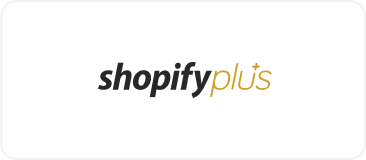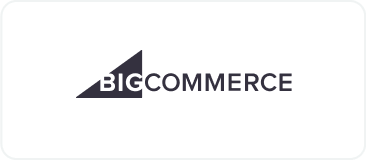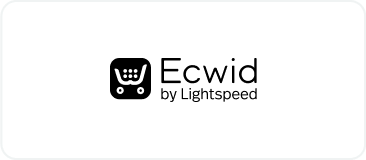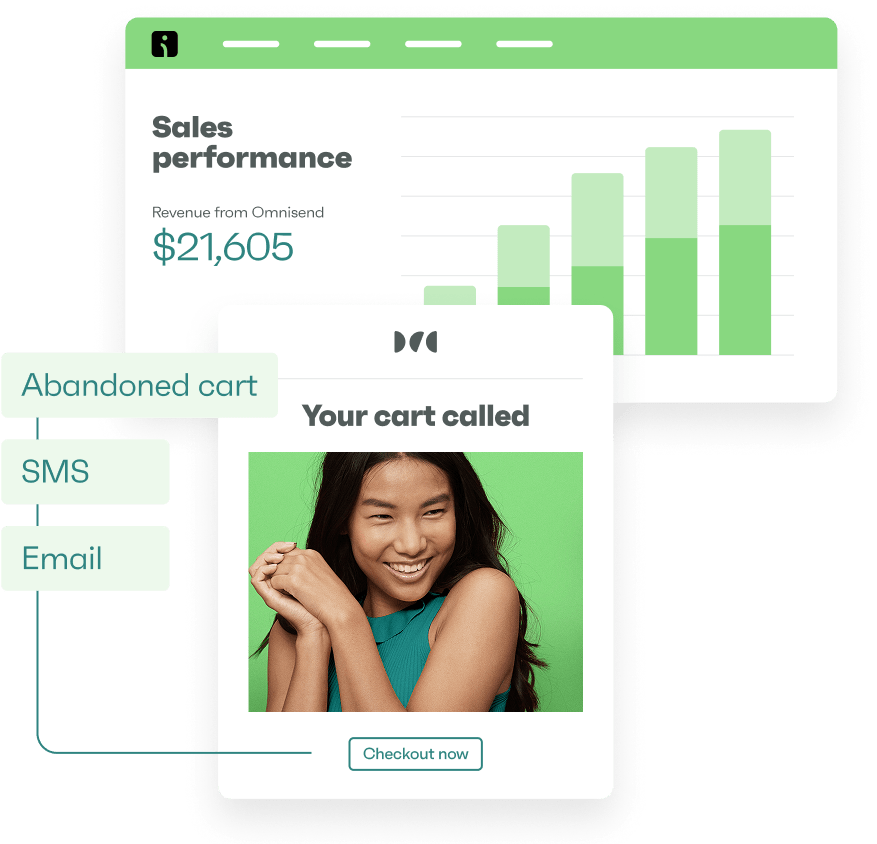Drive sales on autopilot with ecommerce-focused features
See FeaturesBack-to-school marketing targets a $30.9 billion opportunity that extends far beyond school supplies. Parents shopping for notebooks also need new clothes, updated electronics, and home organization solutions, creating multiple touchpoints for your campaigns.
Miss this window and you’re leaving money on the table. Parents start browsing in June, comparing prices across retailers while their kids create wish lists of must-have items. The right email strategy helps you grab your share.
Join us below to discover proven tactics that turn seasonal shoppers into loyal customers before the school bell rings.
Quick sign up | No credit card required
Back-to-school trends for 2025
Deloitte’s annual back-to-school survey landed with a thud — parents plan to spend $570 per child, unchanged from 2024. But that flat number hides massive shifts in how the $30.9 billion season unfolds.
July is the new August
Forget the July rush. Only 61% of spending happens by July’s end, down from 66% in 2024. Parents spread purchases across more paychecks, managing tighter budgets by extending their shopping timeline.
Mass merchants win big — 46% of parents choose Walmart and Target over specialty school stores, up from 40% last year. Brand loyalty vanished too, with 75% ready to ditch favorites for cheaper options (versus 67% in 2024).
Mid-July promotions attract 46% of shoppers, all expecting deals around Amazon Prime Day. Parents plan purchases around these sale events rather than school start dates.
Kids call the shots, parents pay the bills
Economic worries clash with kids’ demands. Despite budget concerns hitting five-year lows, 62% of parents admit children push them to spend more. First-day outfits remain untouchable — 57% still splurge there.
Gen Z parents reshape the game entirely. Three-quarters use social media for shopping decisions, and they spend 1.8 times more than parents who skip social media. Email campaigns now compete with TikTok hauls and Instagram posts for attention.
Nine in 10 kids have must-have items circled in mental wish lists. Your email strategies should acknowledge this reality, balancing value messaging for parents with excitement for kids, whether you focus on email or back-to-school advertising.
10 back-to-school marketing ideas you can steal
The best back-to-school ideas combine parents’ needs with kids wants.
For example, bundles save shopping time, exclusive discount emails reward subscribers, and social giveaways expand reach. You can enable each of these with segmentation that groups subscribers by interests and behavior.
Steal these proven tactics for your campaigns:
1. Offer themed back-to-school discounts
Bundle products by grade to match the shopping lists schools send home. Third-grade math kits combine everything on the teacher’s list — protractor, ruler, calculator — into one discounted package that parents grab without thinking twice.
Olipop turns a soda discount into a back-to-school essential with clever positioning in its email campaign. “School’s In, Sugar’s Out” speaks directly to parents worried about lunchbox choices, making low-sugar drinks feel like smart parenting:
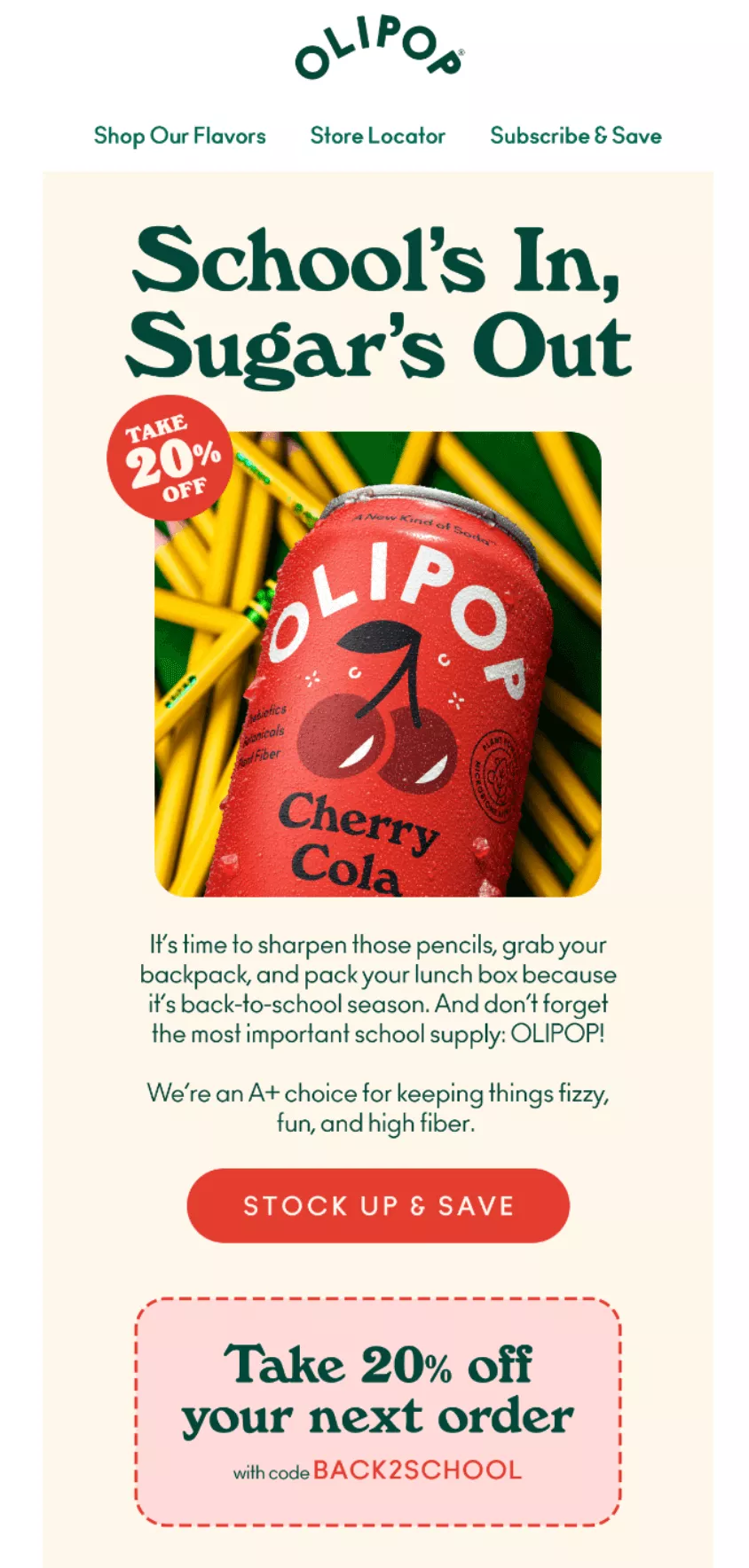
The BACK2SCHOOL code and 20% off create urgency around a non-traditional school supply. Playful touches like calling Olipop an “A+ choice” keep the educational theme running without feeling forced or overly salesy.
CA Design’s discount-focused emails generate its best results in the competitive Irish furniture market. Limited stock alerts create urgency while A/B testing helps them refine messaging that resonates with high-value furniture buyers.
Read the full case study here.
2. Create back-to-school shopping sections
Parents need to find supplies fast when shopping between activities. Grade-level sections group products logically, with kindergarten items in one area and middle school supplies in another, turning frantic searches into quick checkouts.
Misfits Market breaks its back-to-school email into themed sections that match family needs. “What we’re eating” tackles lunch prep, “What we’re rescuing” addresses food waste concerns, and “What we’re chewing on” covers snacks — each section solving a September problem:
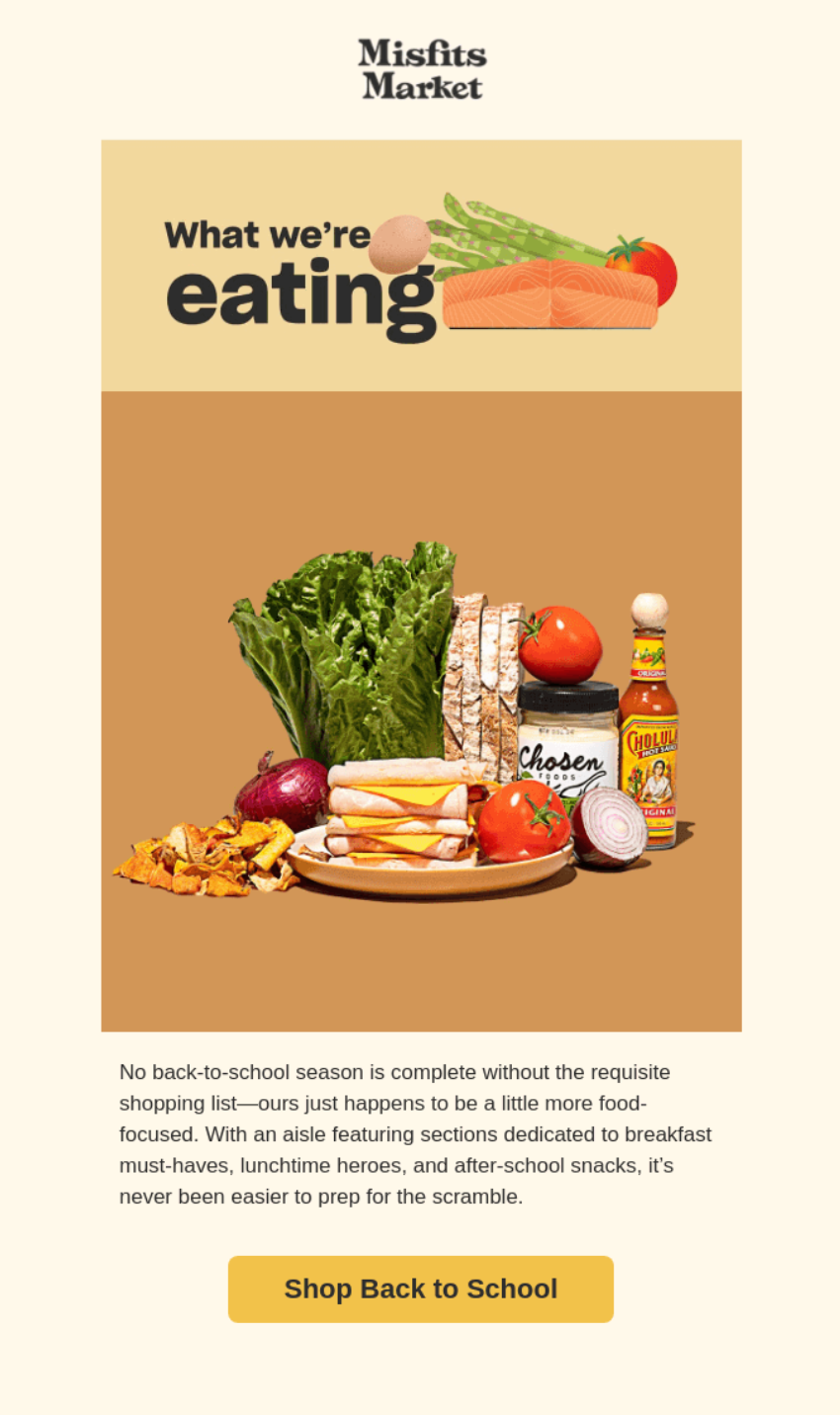
Clear CTAs like “Shop Back to School” and “Shop Rescued Shrimp” guide parents to relevant products without overwhelming choice. Each section pairs problems with solutions — stressed mornings get easy breakfast ideas, packed lunches need rescued produce deals.
3. Share useful back-to-school tips
Content marketing connects when you solve August’s shopping headaches. For instance, you could share lunch prep shortcuts for working parents or backpack organization hacks. Helpful guides position your brand as the friend who gets it.
Quizlet structures its email as a back-to-school resource hub rather than a product pitch. Multiple sections address different student pain points — tackling studying challenges, handling stress, changing perspectives — creating a one-stop guide for academic success:
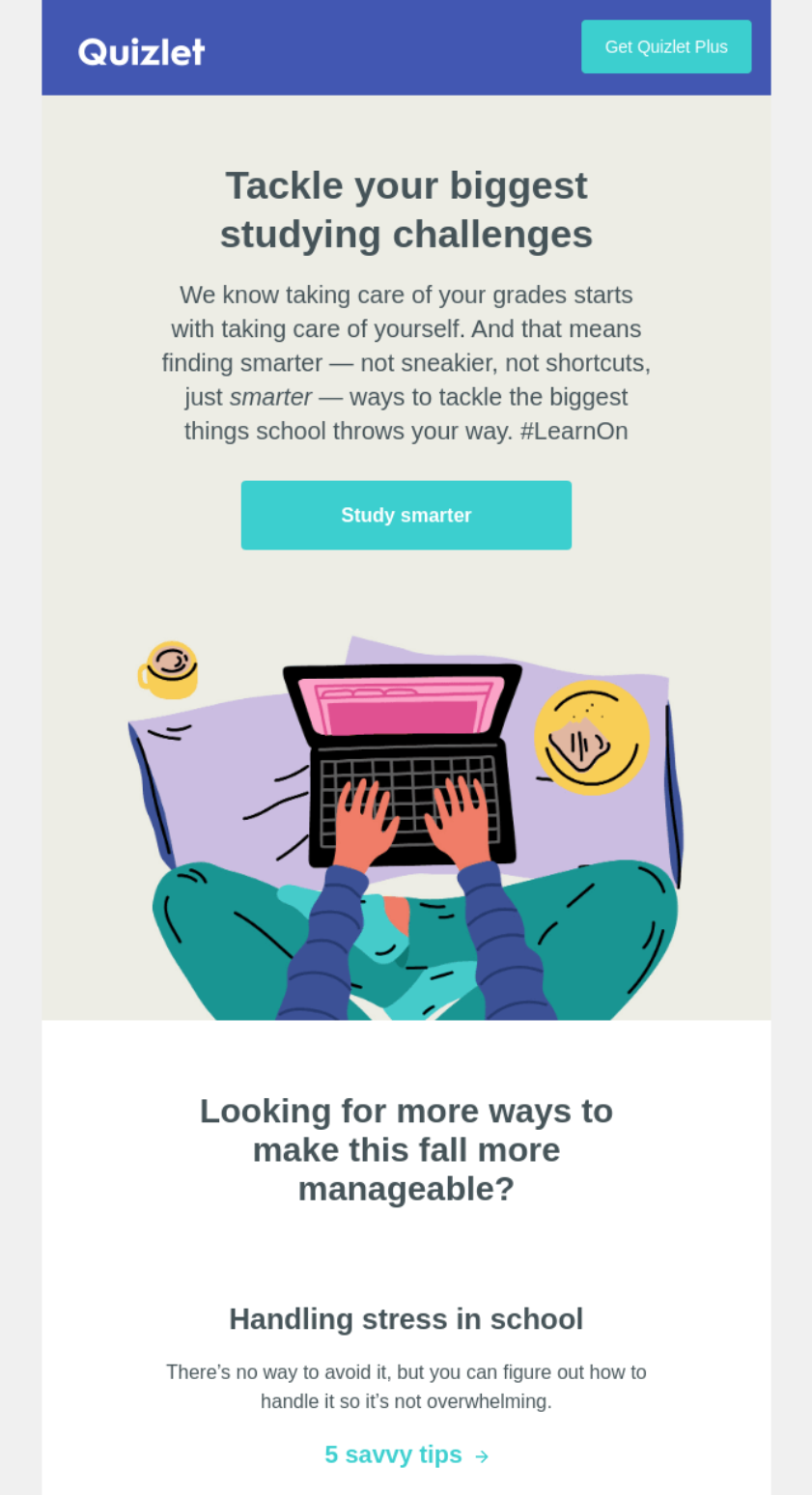
Each section offers actionable tips with clear CTAs like “Study smarter” and “See more tips.” Parents forwarding this to anxious students find practical help, not just app downloads, making Quizlet feel like a study partner rather than software.
4. Launch back-to-school essentials
Pre-packaged supply sets eliminate 20 separate add-to-cart clicks. Parents appreciate bundles matching shared school lists — “fifth grade basics” or “art class kit” — that guarantee nothing gets forgotten during checkout rushes.
Vitruvi positions essential oils as study aids with its “Study Buddy” collection. The email showcases peppermint as a “natural, uplifting stimulant” that helps students concentrate, turning aromatherapy into a back-to-school essential:

An image shows a diffuser alongside notebooks and desk supplies, making the connection visual. “Getting focused has never smelled so good,” adds personality, while the “SHOP DESK ESSENTIALS” CTA groups these products with traditional school supplies.
5. Start your back-to-school campaign early
June back-to-school marketing campaigns catch parents before the inbox chaos begins. Early messages reach organized shoppers who prefer buying supplies before summer trips. You’ll face less competition and connect with customers who have time to browse properly.
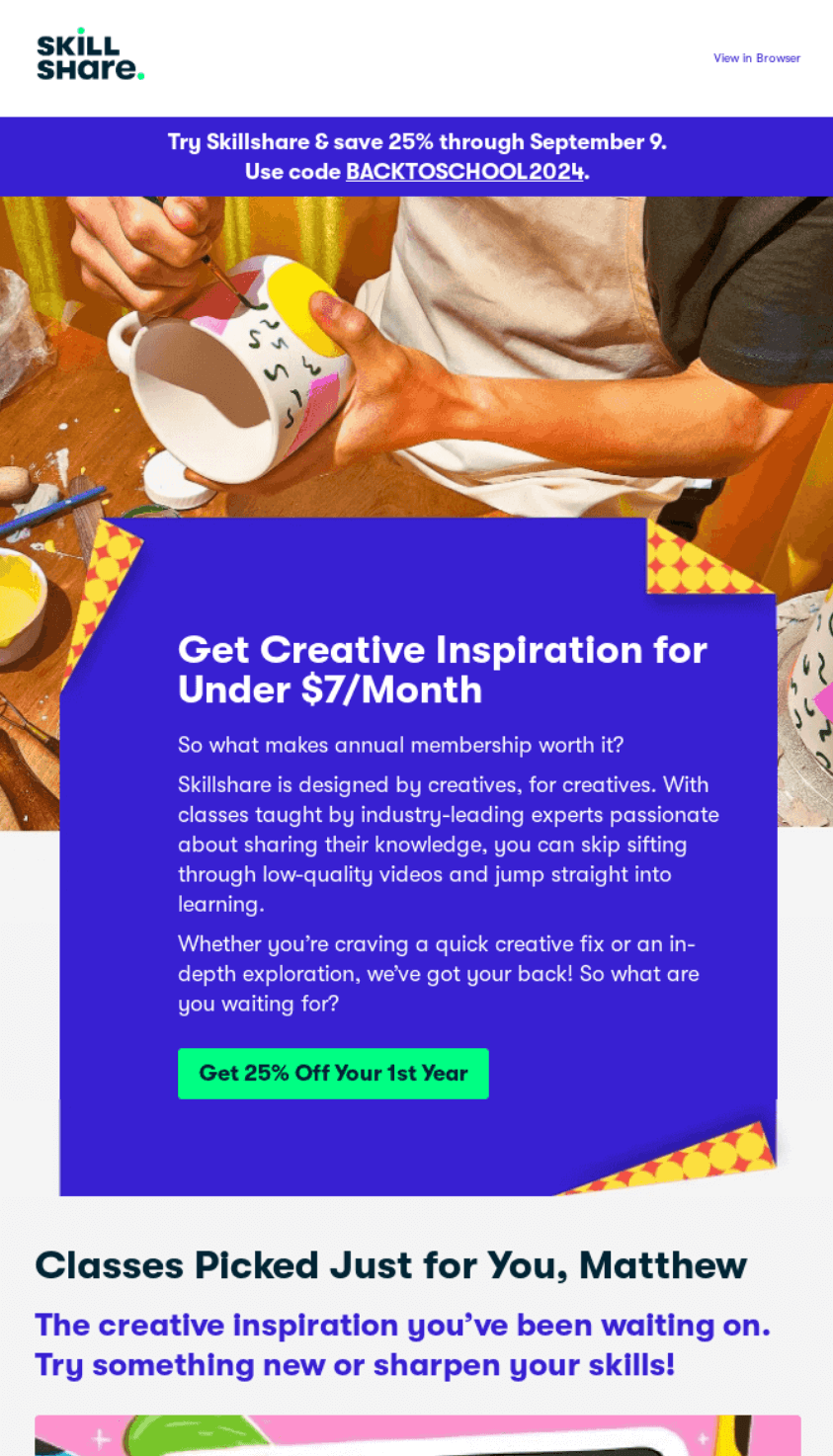
Skillshare launches back-to-school content in early September with personalized class recommendations. The email leads with “Get Creative Inspiration for Under $7/Month,” targeting budget-conscious parents before October price sensitivity peaks:
Curated course suggestions like “Kickstart your Creativity” and “The Art & Science of Drawing” appeal to students needing extracurricular skills. Early messaging focuses on enrichment rather than panic, reaching families planning fall schedules rather than scrambling for supplies.
6. Promote a back-to-school giveaway
Giveaway emails appeal to parents looking to offset rising costs. Contest entries requiring social shares or friend tags help your brand reach new audiences. Winners receive everything their kids need, building goodwill and brand loyalty for future purchases.
Munk Pack runs a back-to-school giveaway that solves a real parent problem — finding healthy snacks kids will eat. The #SnackSmarter campaign offers five $50 gift cards, making entry worthwhile without seeming impossible to win:
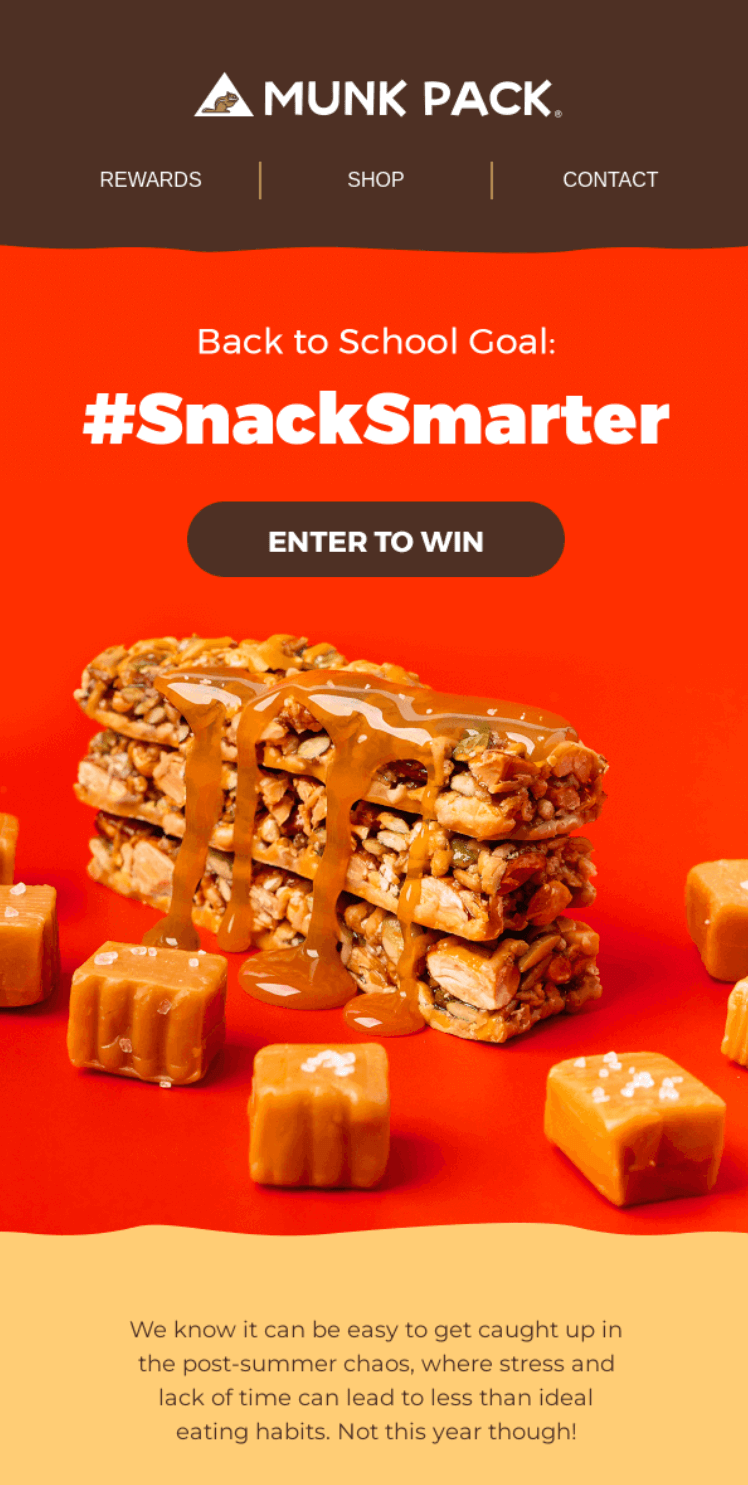
Clear messaging about “less than ideal eating habits” acknowledges parent guilt while positioning Munk Pack as the solution.
The giveaway builds its email list as parents enter, hoping to stock up on keto-friendly bars for lunchboxes and after-school snacking.
7. Promote focus and productivity for busy days
September destroys carefully crafted summer routines. Working parents need planners, meal prep tools, and calendar apps to survive the transition. Products that promise morning sanity find grateful audiences.
Mojo addresses back-to-school burnout head-on, acknowledging that September exhausts both parents and students. The email positions its gummies as productivity fuel rather than candy, promising to leave users “clear headed, focused, and energized for 5+ hours”:
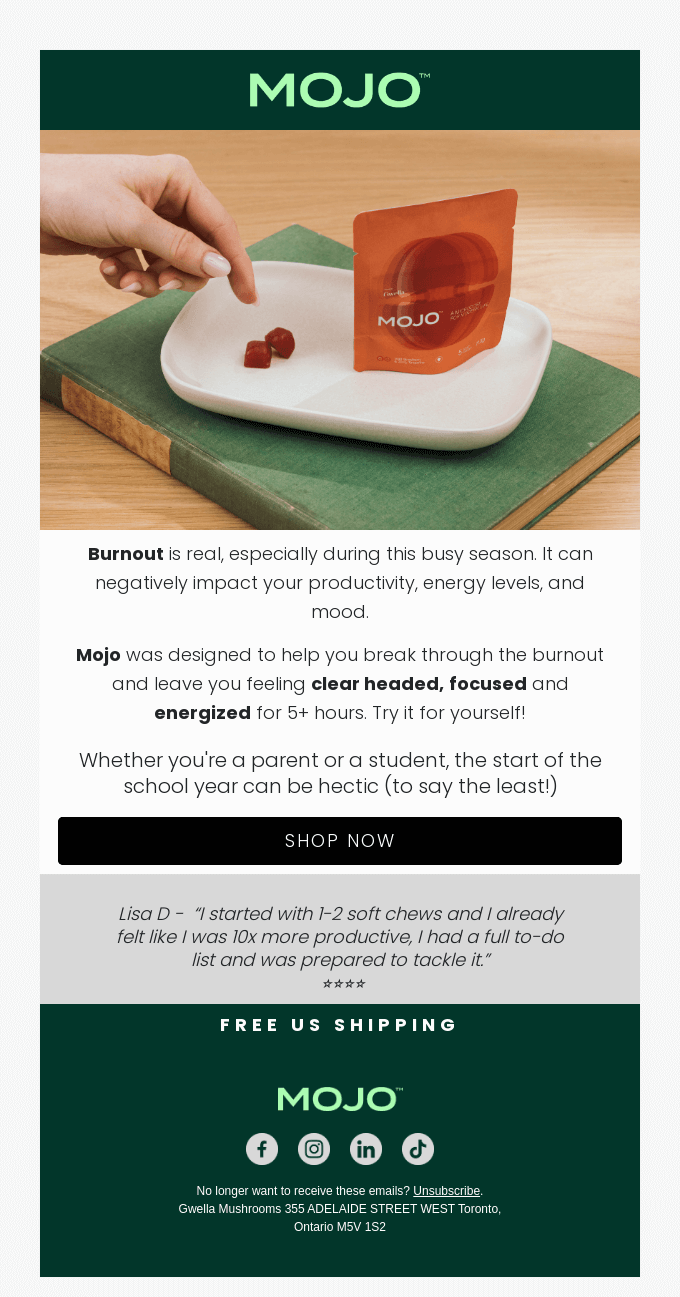
Lisa’s testimonial about tackling her to-do list after just two gummies provides social proof that resonates with overwhelmed parents. Results from a customer beat vague wellness claims when families need immediate help managing hectic schedules.
8. Offer free shipping with a back-to-school promo code
Parents abandon carts when shipping costs appear at checkout. Back-to-school promotions with free delivery remove that final barrier, especially for bulk supply orders. Email subscribers appreciate exclusive codes that save them $8–$15 per order.
Levain Bakery makes free shipping the hero of its back-to-school campaign, knowing parents calculate every dollar. “FREE SHIPPING ON 8 AND 12 PACKS” removes the biggest barrier to ordering cookies online — those painful delivery fees:
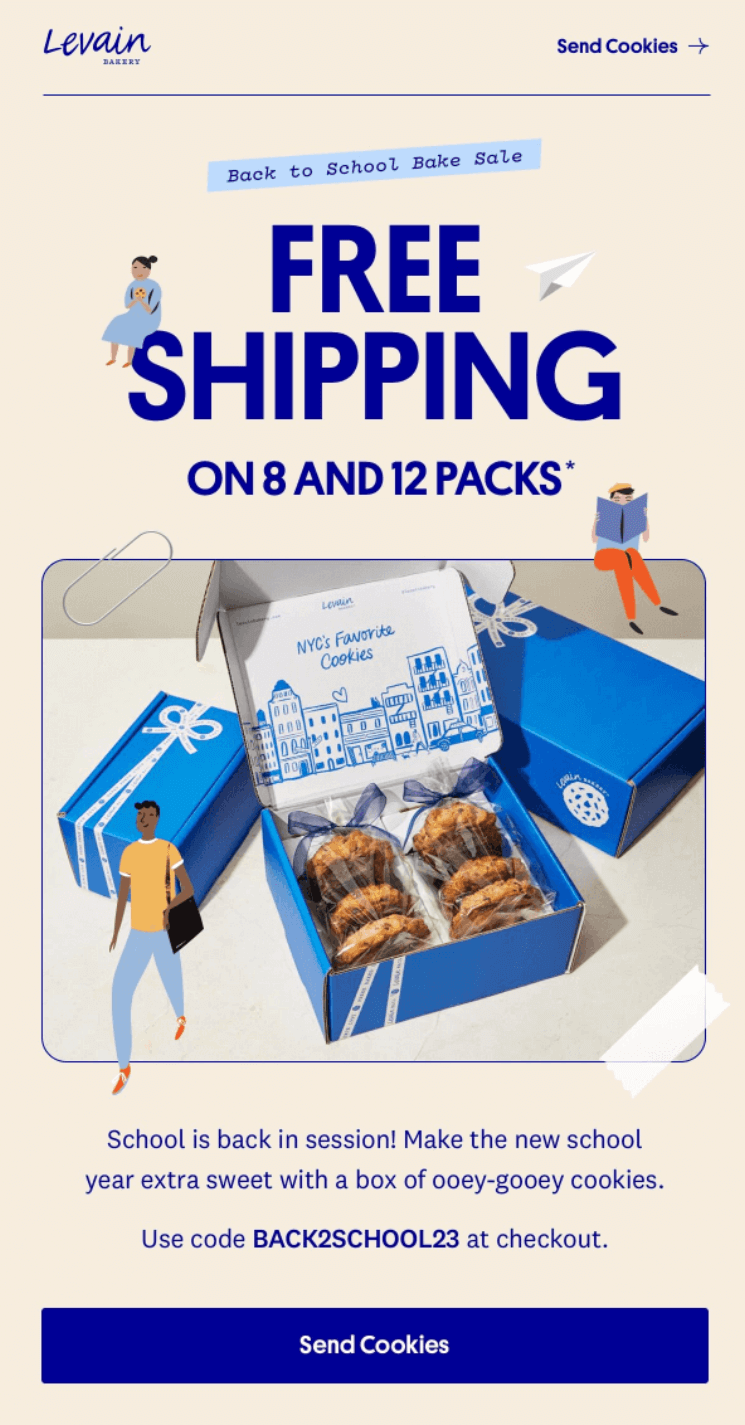
The code BACK2SCHOOL23 feels exclusive, while the messaging “make the new school year extra sweet” connects cookies to celebration rather than just snacking. Parents ordering teacher gifts or treating their kids find the math finally works without shipping costs.
9. Use urgency to drive last-minute sales
“School starts in 48 hours” motivates procrastinators like nothing else. Limited stock on trendy backpacks or lunchboxes creates genuine panic. Parents won’t want to disappoint their kids over sold-out favorites.
Atoms creates genuine urgency with “sale is ending tonight at midnight,” giving procrastinating parents a hard deadline. The casual “mosey on over” softens the pressure while the 15% discount code SCHOOL15 provides real savings on last-minute shoe purchases:
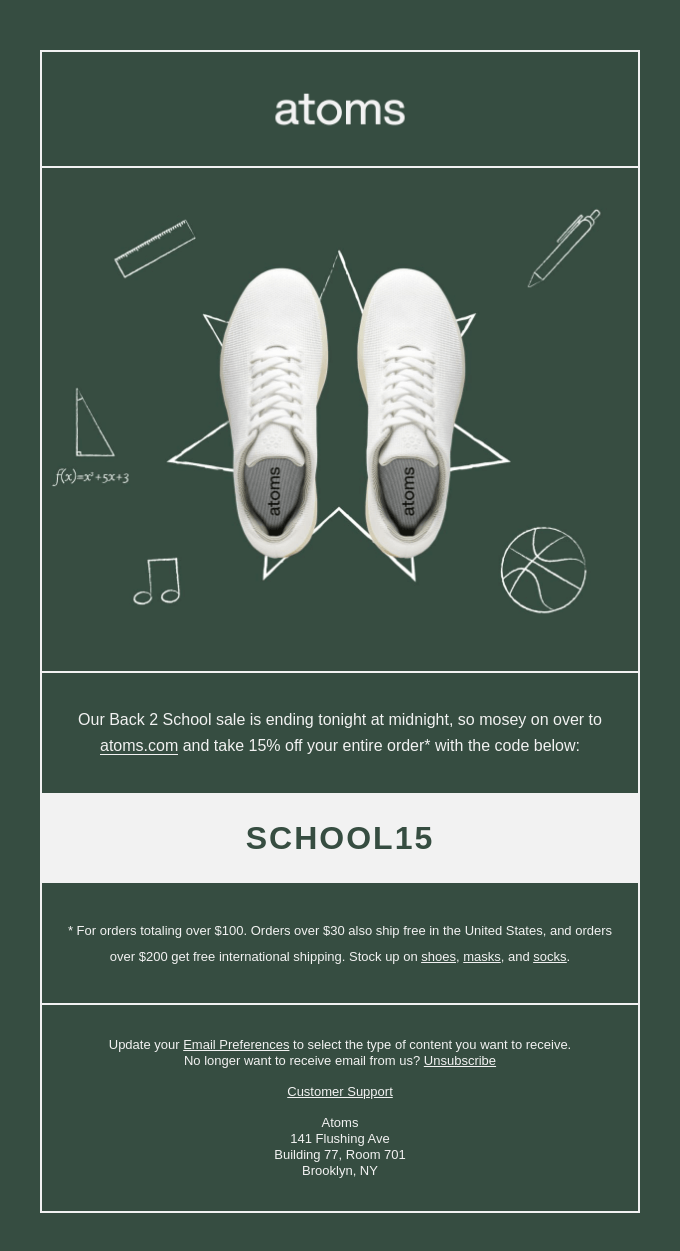
School supply graphics around the sneakers remind parents what they’re shopping for. The midnight deadline is more effective than vague “ending soon” messages because parents know how many hours remain to grab new shoes before prices jump.
10. Use popups to promote back-to-school offers
Exit-intent technology catches parents mid-research with timely deals. First-visit popups collect emails in exchange for supply checklists. Returning visitor popups remind them about abandoned carts with fresh incentives.
Omnisend has pre-built back-to-school popup templates, such as this one:
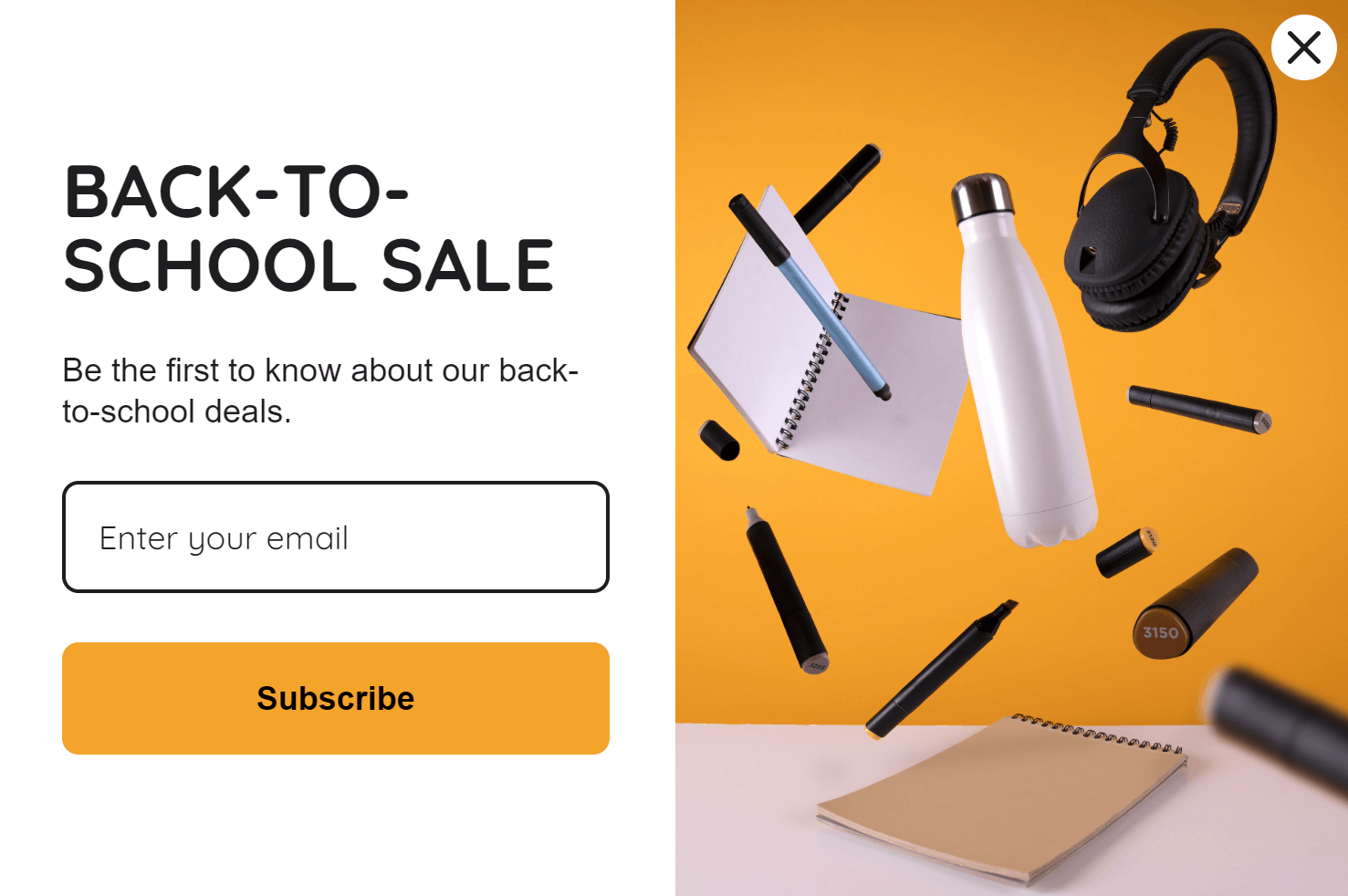
That form is effective because it uses a high-quality product image and correct spacing for all text elements for a professional look.
Editing the form is intuitive thanks to its drag-and-drop form builder, which includes items for fields, images, checkboxes, timers, text, and buttons. Plus, you have complete targeting control, with visitor, page, source, and UTM options.
Here’s a screenshot of the Form editor in Omnisend:
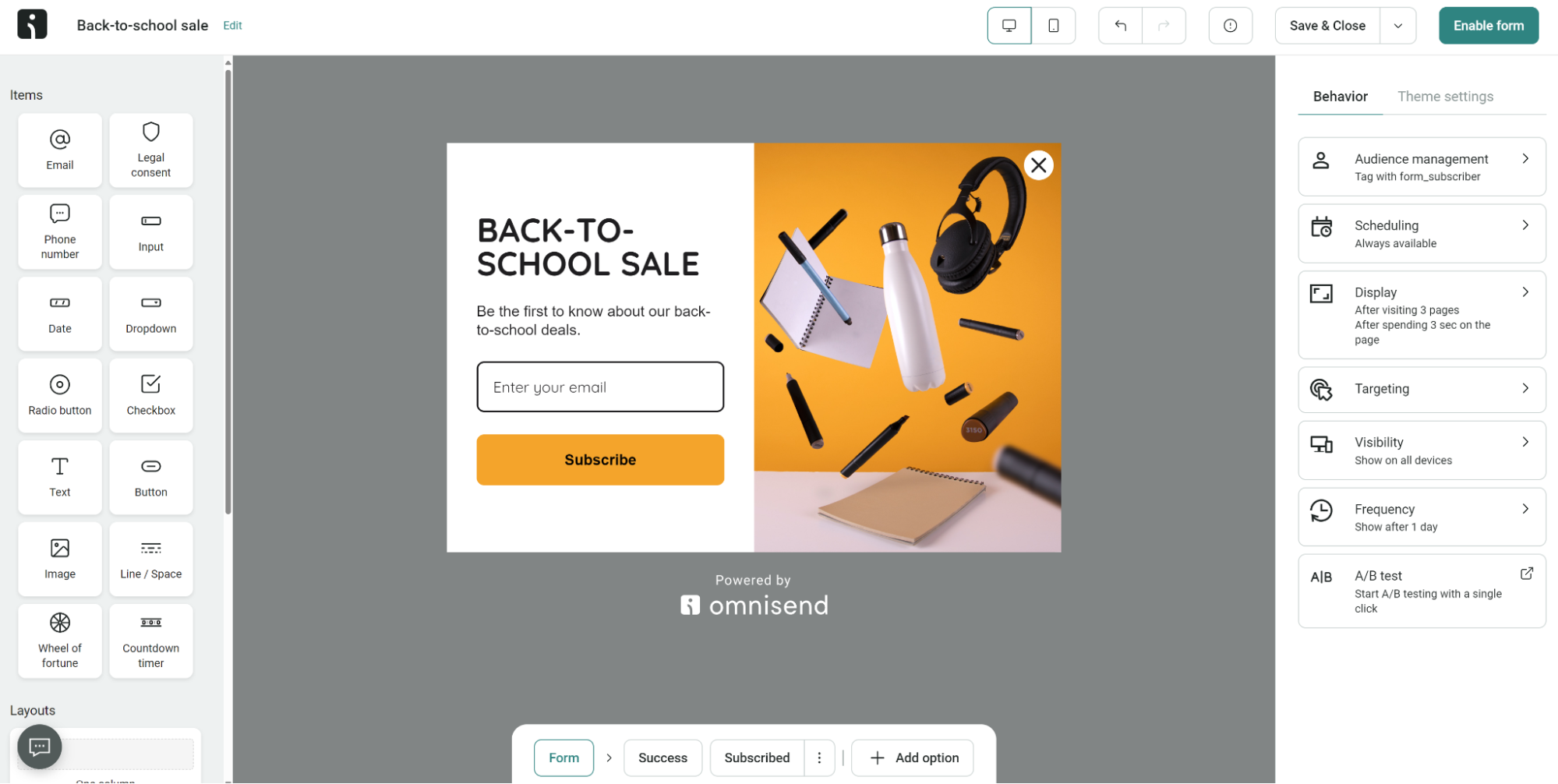
Best practices for successful back-to-school marketing campaigns
Parents shopping for school gear and checking prices on their phones between soccer practice, dinner, and bedtime need offers that match their reality. Here’s what you can do to encourage engagement and increase sales:
- Lead campaigns with dollar amounts, not percentages: “Save $50 on backpacks” will generate higher open rates than “25% off”. Parents juggling bills want savings upfront, not mental math exercises.
- Create bundle deals that solve whole problems: Package supplies together — kindergarten craft kits, middle school math sets, high school tech bundles. Parents pay more for convenience when bundling saves time and eliminates decision fatigue.
- Test send times around parent schedules: Skip the standard 10 AM sends. Try 8 PM, the time at which Omnisend data shows 59% open rates — it’s after bedtime routines when parents finally have quiet moments to shop without interruptions.
- Build social proof into every campaign: Include customer photos of happy kids with their supplies. Real families using your products matter more than polished marketing shots, especially for emotional purchases like first-day outfits.
- Write subject lines kids would click: “Unicorn backpacks your daughter will love” outperforms “Quality school bags on sale.” Parents might forward emails to older kids for approval, so both audiences need something compelling.
- Layer email automations beyond the obvious: Cart abandonment flows are crucial for revenue recovery. Also, build browse abandonment flows for comparison shoppers, restock alerts, and re-engagement campaigns using Omnisend’s pre-built templates.
- Plan post-purchase campaigns now: Parents discover forgotten items after school starts. Schedule “what did we miss?” emails for the second week using Omnisend’s post-purchase flows that trigger automatically based on order dates.
La Machine Cycle Club achieves 64% open rates on automation emails by matching send times to cycling events. Sunday morning campaigns hit inboxes at 7 AM, right before weekend rides begin.
Read the full case study here.
Make this back-to-school season your best yet
Parents searching for supplies represent concentrated buying intent rarely matched during other seasons. They’re comparing prices, building lists, and ready to purchase — all you need to do is reach them at the right moment with the right message.
Creativity gets attention, but automation captures sales. A clever subject line might earn high open rates, but abandoned cart flows, personalized product recommendations, and offers based on browsing behavior drive revenue.
Set up triggered campaigns that respond to parent actions while testing fresh creative approaches in your regular sends. The combination of automation working behind the scenes and engaging content will help you generate more sales.
Quick sign up | No credit card required
Back-to-school marketing FAQs
Early June works best. Parents browsing between vacation planning and swim lessons appreciate getting organized early. You’ll reach them before July’s promotional madness creates inbox fatigue.
Run your campaigns over eight weeks to cover June browsers wanting time to compare, July hunters chasing deals, and August stragglers needing whatever’s still in stock.
Email promotions build relationships that convert over time. Cart and checkout abandonment flows recover lost sales while social media creates discovery moments for parents scrolling TikTok during lunch breaks.
Think beyond pencils and notebooks. Busy parents need help managing September chaos — meal delivery services, home organization systems, even wine clubs marketing “survival packages” for stressed adults.
TABLE OF CONTENTS
TABLE OF CONTENTS


No fluff, no spam, no corporate filler. Just a friendly letter, twice a month.
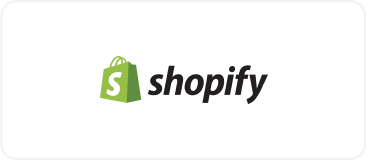
 OFFER
OFFER

